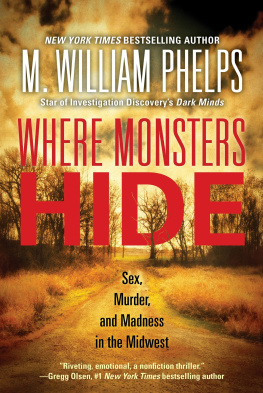/>
/>@page { margin-bottom: 5.000000pt; margin-top: 5.000000pt; }
Contents \
Chapter 1 \
Chapter 2 \
Chapter 3 \
Chapter 4 \
Chapter 5 \
Chapter 6 \
Chapter 7 \
Chapter 8 \
Chapter 9 \
Chapter 10 \
Chapter 11 \
Chapter 12 \
Chapter 13 \
Chapter 14 \
Chapter 15 \
Chapter 16 \
Chapter 17 \
Chapter 18 \
Chapter 19 \
Chapter 20 Denouement Acknowledgments Also by Peter Clement
Copyright 2003 by Peter Clement Duffy The author wishes to gratefully acknowledge the following: Stand By Me by Jerry Lieber, MikeStoller, Ben E. King 1961 Mike & Jerry Music, LLC, Jerry Lieber Music, Mike Stoller Music.Copyright renewed. All Rights Reserved. Used by permission. Most Likely Youll Go Your Way andIll Go Mine by Bob Dylan copyright 1966 by Dwarf Music. All rights reserved. Internationalcopyright secured. Reprinted by permission.MORTALR EMAINS By Peter Clement The fourth book in the Earl Garnet series Synopsis: In a small upstate New York town, an idyllic lake yields a ghastly discovery when the skeletal remains ofa young woman missing for 27 years are pulled from the icy depth along with unmistakable evidenceof her murder. Suddenly, the long-dormant case of Kelly McShane Bradens mysterious disappearanceis reactivated. And for two devastated men, dark emotions and disturbing secrets will also rise to thesurface. To Vyta, Sean, and James \
Chapter 1 Monday, October 22, 10:00A.M. Near Hampton Junction in the southern Adirondack Mountains Mark Roper followed sheriff Dan Evans down, staying so close to the mans flippers that they
occasionally brushed his face mask. But he didnt want to get too far behind the tunnel of light fromDans headlamp, which led them ever deeper into the darkness. Unable to see anything but black outsideits range, Mark couldnt tell up, down, or sideways unless he focused on the illuminated streams of algaestreaking at them. Like snow against a windshield, they heightened his sense of speed. The cold penetrated his hood, giving him a doozy of an ice-cream headache; it burrowed through thevulcanized rubber of his dry suit and a double layer of thermal underwear, then through skin, muscle, andbone to settle directly into his marrow. Despite diving gloves, even his fingers threatened to freeze up, buthe kept his grip on the safety line, kicking and propelling himself ever lower, moving hand over hand.God, when would they get there? he wondered, repeatedly having to pinch his nose through his mask,then blow to relieve the painful pressure in his ears. Hed been down this deep before, but in the warm blue ocean off Hawaii. Here he might as well havebeen swimming in ink. Though the water was clear, the mountain lake, nestled in a steep gorge, was sonarrow and deep that it swallowed most of the sunshine from the surface. Other dives theyd made in thedistrict were shallow, but with this one claustrophobia pressed in with smothering force. He couldnt lethimself get far from Dan, who carried the big handheld spotlight. If he ended up alone, his own headlampwould be too feeble at this depth, and Mark wasnt at all sure that hed be able to hold panic at bay. Adangerous situation, because down here cold and disorientation were killers. Already he was breathingtoo hard, the sound rushing loudly through his ears, and he made a conscious effort to slow it down. A white cord trailed out in front of them to nothingness. If it hadnt been there, the end abruptly markingwhere the bottom lay, they might have hit the thick layer of silt and muck that covered the lakes floorand thrown up such a cloud of debris theyd be in a virtual blackout that not even a lamp could penetrate.As it was, their arrival kicked up plumes of dirt that hung suspended around them like giant gray fronds. Dan looked at the dive computer on his sleeve. Mark did the same, barely able to read the screen.According to the numbers measurements of the cold, the pressure, the depth, the altitude of the lake the calculation told him they could only stay about fifteen minutes before having to head back. Theirascent would be no faster than a half foot per second, and they would have to make a three-minutesafety stop fifteen feet from the surface to allow the release of excess nitrogen from their bloodstreams.The clinical consequences if he got it wrong multiple emboli, pneumothoraces, mediastinalemphysema, subcutaneous emphysema, all of them air bubbles where they shouldnt be were nastyenough that hed die screaming. As county coroner, in the last four years Mark had seen three divevictims with just such injuries, and he sure as hell was going to be careful. With so little time, he wanted to get going. But the silt remained in fact, seemed to grow worse making it impossible to see at all, cutting him off from Dan. Waiting for it to settle felt like an eternity, andhe began to doubt his senses, unable to make out even his own bubbles or tell if the rope in his hand ledto the surface or the bottom. Stop! Think! Act!he said to himself. It was the divers credo to stay out of trouble. He breathed deeply,slowly, to gain control. Then he adjusted the pressure in his suit with a small squirt of compressed air tomaintain neutral buoyancy. Dan came into view, floating just below. Mark suspected that he, too, was trying to conquer a sense ofpanic and probably regretting the day theyd flown off to Hawaii together for the week of scuba trainingthat would qualify them for these forensic dives. But Mark had pushed the idea so theyd no longer haveto wait around for an outside team every time someone drowned. Finally, the particles in the water cleared.
The area around them hadnt so much as a strand of seaweed on it. But it wouldnt be easy to spot whatthey were after, he decided, surveying the little he could see of the barren landscape. The hooks from thesearch-and-rescue boat must have snagged their catch deep within this soft mush because anything of anyweight would have buried itself under its surface. Unless the pulling had rooted up the rest of the remains before the limb tore off, he knew theyd neverfind them. Dan slowly turned and swept the surrounding area with the probe of his lamp. It barely penetrated tenfeet before the thick, absolute darkness sucked it up. Hopeless,Mark thought. Indeed, after a complete rotation, they had seen nothing. Mark took a reading from his compass. The draggers had told him the target should lie approximatelynorth to northeast from the anchor line. He oriented himself so that what they were looking for should bein front of him, if the men above had been right in their guesstimates. He handed Dan his headlamp, tookthe powerful handheld light, and started forward. Hed gone only twenty feet when it loomed up before him. A headless thorax, rib cage included, protruded out of the soft mud, resting at a slight angle. The lefthumerus and a more or less intact right arm trailed into the black sediment, making it seem as if theskeleton were trying to push itself up out of its grave. The bottom half, the pelvis and legs, remained outof sight. There was no sign of the skull. Earlier that morning Dans volunteers had been dragging the lake for the body of aseventy-nine-year-old man with Alzheimers disease whod wandered off the previous weekend.Retrieval should have meant a simple transfer to the undertakers in Saratoga Springs, the paperwork tofollow. Instead they hauled up the bones of a left forearm barely attached to the remnants of a fingerlesshand. They called Dan and Mark, but not before dropping an anchor with a line attached. Up top Dan had shown Mark the limb as they prepared for the dive. It was pretty well stripped of flesh,but enough cartilage and connective tissue held it together that one of the grapple prongs had caught thespace between the ulna and radius, the long bones running from the elbow to the wrist. To Marks amazement, the bones owner appeared equally intact. Except down here the strands ofremaining tissue waved in the water like tattered clothing. Using the beam, he signaled Dan to swim over. Everything had been colored brownish green by a heavy overgrowth of algae. That the flesh and organswere otherwise mostly gone certainly meant many years had passed since this person went in the water.That some of the bones were still connected at all, he thought, had to be from the preservative effects ofcold and mud on gristle. Certainly the absence of a head was no surprise. The bony portion that joined askull atop a spine was a small peg no bigger than the end phalanx of the little finger. In life it took aneckful of muscle, sinew, and cartilage to hold everything together, more than for any other joint in thebody. No amount of cold mud could preserve that much connective tissue and keep everything in onepiece. The skull would have detached from the spine and stayed in the sludge at the first yank of thegrappling hooks. Better not go rummaging about for it either. Thered be other much smaller bonesscattered about in the sediment, such as the fingers. One of them might have a ring on it that would help
Next page










